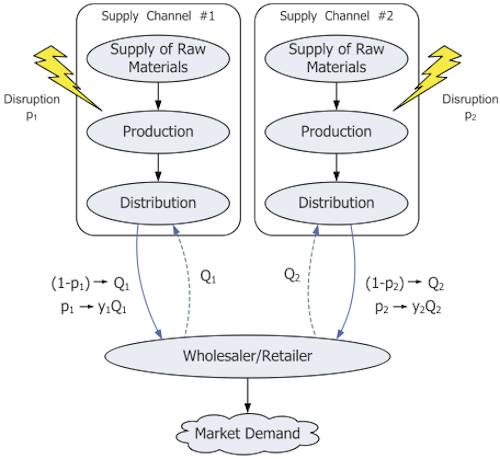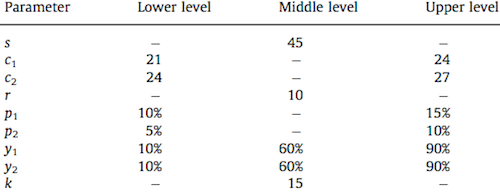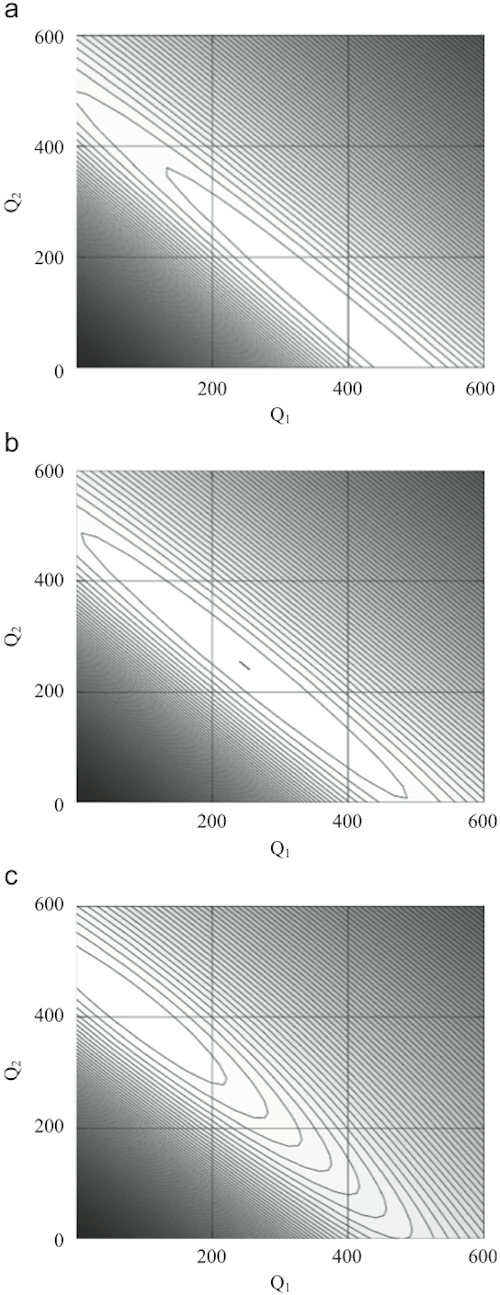Dual Supply Channel Disruption and Supply Chain Design
This is the continuation of the Greece week and today I am going to have a look at a mathematical model to capture the effects of dual disruptions in a news-vendor model.
This time the three authors (Xanthopoulos, Vlachos and Iakovou) come from the Aristotle University of Thessaloniki.
Method
The authors developed a model where a retailer is able to order from two different supply channels. Figure 1 shows the supply chain schematic.
Three different types of the model are modeled separately:
- unconstrained model,
- fill rate constrained model,
- Type I service level constraint,
The decision variables are the order quantities from channel one and two.

Analysis and managerial insights
The models are analyzed using a numeric analysis with the parameters given in figure 2. Different values for the purchasing cost ci, disruption probabilities for the supply channels one and two (pi). The impact of the disruption is denoted by yi.

144 parameter combinations are analyzed. Figure 2 shows the iso-profit lines for the order quantities Q1 and Q2 for different impact levels in the first supply channel (y1: a) 0.9, b) 0.6, c) 0.1)

The authors conclude
- It is also observed that as the impact of a disruption on the first channel increases, the optimal solution moves from a solution that mainly utilizes the first supply chain to a solution that mainly utilizes the second one.
- Depending on the values of the purchase costs (ci), the disruption probabilities (pi), and the effect of a disruption (yi), one of the suppliers may dominate over the other one, leading to a single supply source.
- Nevertheless, for both the uncapacitated and capacitated problems for certain combinations of the values of ci, pi, and yi, a dual-sourcing policy outperforms a single-sourcing one. In such cases, it is optimal to place the larger part of the total order to the dominant channel and its lesser part to the second one, so as to hedge/mitigate the disruption risks.
- Moreover, for very high service levels (near 100%), large orders should be placed to both suppliers.
- [In] the case in which the first supplier is the dominant supplier as well as the more reliable from the two. In such a case, no matter how high the fill rate will be, orders should be placed only to the first supplier and the second one should not be activated at all.
Conclusion
This article provides some insights into a dual supply channel disruption case. From the title and abstract of the article, I was however expecting more discussion of the results, perhaps the impact of other driving factors beside the impact, probability and ordering cost.
Xanthopoulos, A., Vlachos, D., & Iakovou, E. (2012). Optimal newsvendor policies for dual-sourcing supply chains: A disruption risk management framework Computers & Operations Research, 39 (2), 350-357








Add new comment